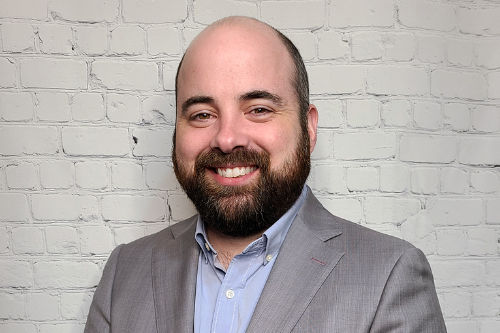

When it comes to the implementation of risk mitigation technology, few sectors have embraced the area as much as construction – and this is something that Economical Insurance’s Marc de Bruyn (pictured below), director of risk services, and Anand Shastri (pictured above), senior regional mid-market, commercial insurance underwriter, are very well-versed in.

“We’re seeing a lot of job sites embracing cloud-based solutions for things like tracking and monitoring workflows, project risks, recording and measuring project milestones, inventory management, and things like that,” said de Bruyn.
“We’re also seeing a good amount of use of GPS asset tracking to prevent vehicles and equipment from walking off the job site. We’re seeing a lot of traction on water loss mitigation – meaning early detection of leaks and then automatic shutoffs to prevent water damage, which has obviously been a big issue in this space. And we’re also seeing a lot more online virtual training.”
This mention of virtual training factors into something else that is becoming increasingly prevalent in the construction sector – the rise of virtual inspections.
“In a lot of ways,” de Bruyn explained, “these are not that different from in-person inspections. We try to acclimate the customer to the software and work out any potential connectivity issues beforehand – but otherwise, I think our real goal is to make the experience feel as close as possible to what they’re already used to.”
This approach of careful preparation is also something that is useful across the whole gamut of risk mitigation technology – especially when it comes to implementing such tech into a construction budget.
“One needs to be realistic about expectations,” reflected Shastri. “Depending on what type of construction project is in play, it’s useful to look at things in terms of what’s practically feasible versus what’s nice to have.”
“So, if you have contractors, equipment GPS tracking, and in the case of tower cranes, site safety and engineering design for load capacity is a must. But there may be certain things that are not as mandatory – so it’s good to be cognizant of cost versus benefit. Introduction of concepts before the project begins is better than mid-term or later when they’re not budgeted for.”
And what about technology that might not seem as immediately ‘feasible’ now, but will soon come into its own? What does the future hold for this sector?
“One of the areas that is constantly evolving is catastrophe modeling,” said Shastri. “In different parts of the world, the local geo-conditions matter a lot in terms of earthquakes, floods, hurricanes, and so on. This area is evolving so rapidly that there’s a lot of good data in the global insurance pool. The insurers might disagree on some areas, but by and large, there is convergence on major peril impact.
“In the current era with the impact of climate change, suddenly things that were a one in 500 years flooding event have become more frequent, e.g. like a one in 50. So, using historical data is good, but sometimes the current models tend to be more rapidly evolving and underwriters need to be on the cutting edge in analysis.”
“There are a few areas that have seen a lot of growth, with some exciting opportunities to explore,” said de Bruyn. “Machine learning is a big one, of course, which is having an impact well beyond construction alone. Drone usage is another big one. I think the benefits of that are pretty self-evident, and the cost is coming down – drones are not quite as prohibitive as they used to be. It’s all about getting a better understanding of the site that you’re building on to avoid any sort of costly surprises down the road. I think the technology has really come a long way in terms of being able to avoid things that would have been impossible to detect 20 or 30 years ago.”
